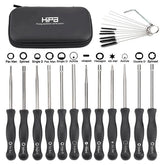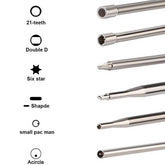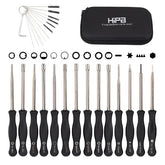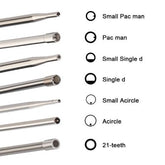How to Cold Start a 2-Stroke Engine Correctly
Many beginners may be confused about how to cold start an engine, especially if they don’t carefully read the manual. Switching between "choke on" and "choke off" can indeed be quite confusing. In this blog, we will approach the topic from the perspective of beginners and provide a detailed guide on the correct steps for cold starting an engine.

What is a Cold Start?
A cold start refers to the process of starting an engine that has not been run for a while or is at ambient temperature. During this time, the engine components are cold, and the fuel may not vaporize as easily. This situation requires specific techniques to ensure smooth ignition and operation. For 2-stroke engines commonly found in equipment such as chainsaws, string trimmers, and lawn mowers, understanding how to properly initiate a cold start is crucial for optimal performance.
The Role of Chokes in 2-Stroke Engines
Chokes are essential features in small engines designed to control the air-fuel mixture during the starting phase. In a 2-stroke engine, the choke serves to enrich the mixture by reducing airflow and allowing more fuel to enter the combustion chamber. Here are the types of chokes typically used in 2-stroke engines:
Manual Choke: Operated by the user via a lever or knob. The operator engages the choke to enrich the fuel mixture when starting a cold engine.

Automatic Choke: Engaged automatically based on engine temperature, often utilizing a bimetallic strip that opens the choke as the engine warms up.

Electric Choke: Controlled by an electric solenoid that adjusts the choke opening automatically when the ignition is activated.
Hipa Carburetor for GX340 GX390
Primer Bulb: While not a traditional choke, pressing the primer bulb several times before starting helps force fuel into the carburetor, making it easier to start the engine.

How to Cold Start a 2-Stroke Engine
Now that we understand what a cold start is and the role of chokes, let’s go through the steps to successfully cold start a 2-stroke engine:
Step-by-Step Guide:
Check Fuel Mixture:
Ensure that you have the correct fuel-oil mixture. Most 2-stroke engines require a specific ratio (commonly 50:1 or 40:1). Use high-quality oil designed for 2-stroke engines to avoid damage.
Set the Choke:
If your engine has a manual choke, engage it by moving the choke lever to the "on" position. For automatic chokes, make sure the engine is cold, and it will handle this for you. If your engine has a primer bulb, pump it several times to fill the carburetor with fuel.
Hipa Carburetor Kit for Troy Bilt Coleman Powermate 6250 6500 5500 Generator
Position the Equipment:
Place the chainsaw or other 2-stroke equipment on a stable surface, ensuring that it’s secure and free from obstructions.
Start the Engine:
Pull the starter cord firmly. You may need to pull multiple times until the engine fires. Avoid yanking too hard to prevent damage to the starter mechanism.
Adjust the Choke:
Once the engine starts, keep it running for a few seconds. Gradually move the choke to the "off" position as the engine warms up. If using a primer bulb, you may skip this step since the automatic choke handles it.
Let It Warm Up:
Allow the engine to idle for a moment before putting it to work. This warming-up period ensures that the engine runs smoothly and efficiently.
Why Cold Start This Way?
Cold starting your 2-stroke engine with the choke engaged is crucial for several reasons:
Enhanced Fuel Vaporization: A richer fuel mixture allows for better vaporization, facilitating easier ignition when the engine is cold.
Prevention of Stalling: Using the choke prevents the engine from stalling due to insufficient fuel supply during the initial start-up.
Reduced Wear: Proper starting procedures minimize the risk of flooding the engine or causing damage, extending the life of your equipment.
Following these steps to cold start your 2-stroke engine can significantly improve its performance and reliability. Understanding the function of the choke and why it's necessary during cold starts will help you maintain your equipment effectively and enjoy hassle-free operation. Happy DIY-ing!























